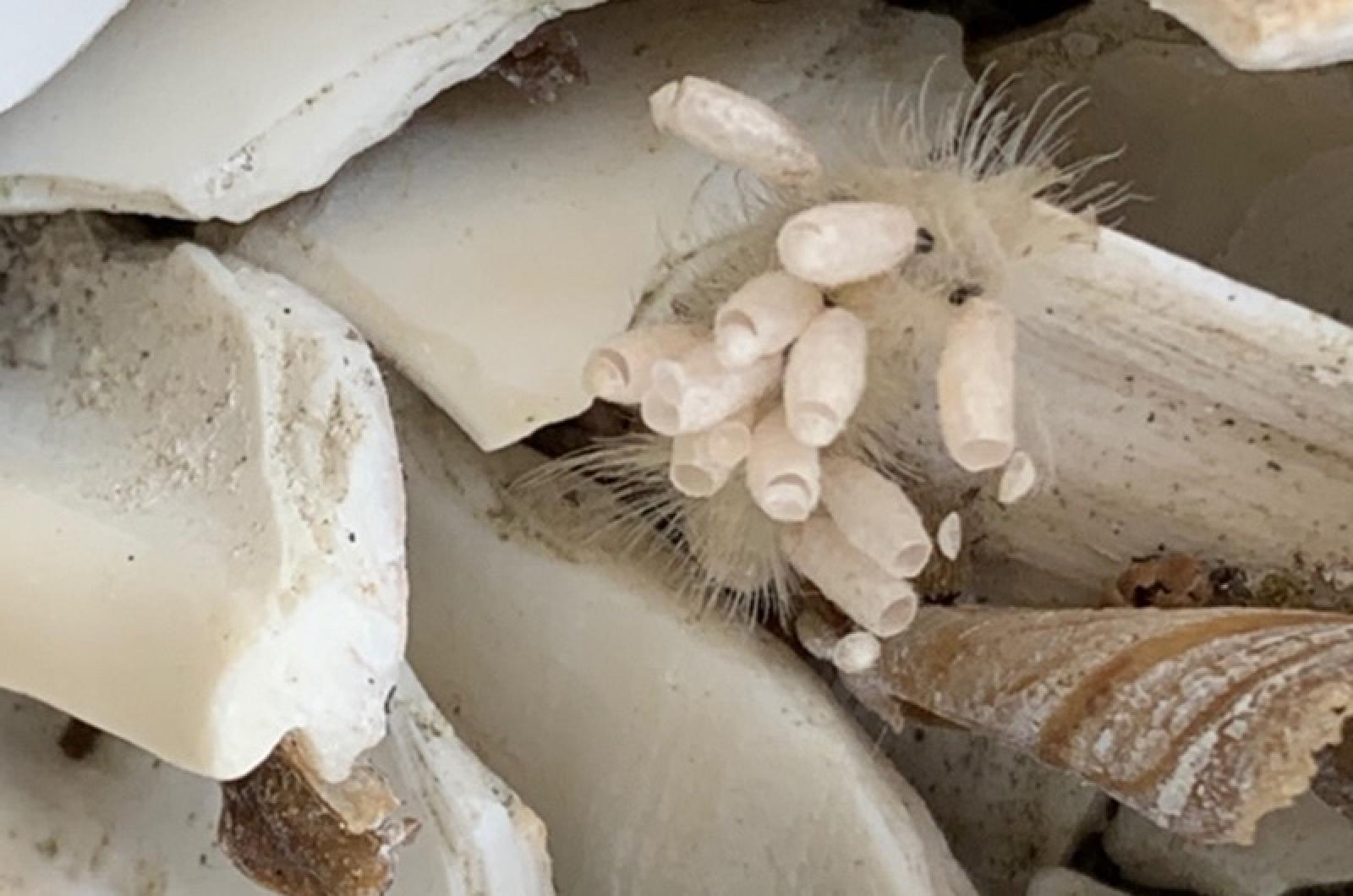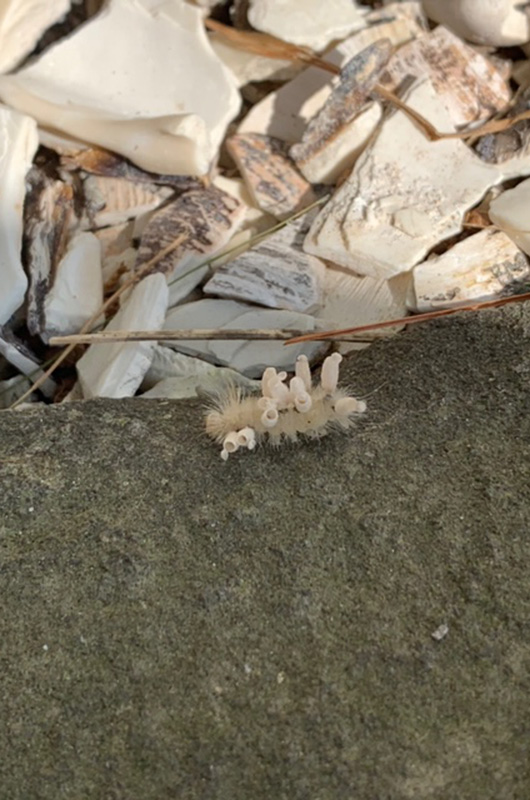No matter how bad your day, week or month was, always know that it could be worse.
The fate of a caterpillar that has fallen victim to a parasitoid wasp, for example, is likely infinitely worse and a situation that could give anyone nightmares. This cruel condition came to my attention through a series of photos and clues — a teasing test of skills between two naturalists.
I was first given a close-up photo of some white tubes with some hairs just visible protruding from below them. I guessed, wrongly, that it was a photo of barnacles, and thus earned a slightly wider view of the same subject. Is it a land or marine creature? I asked, noting the shell substrate on which the mystery organism rested.
“Moves freely and lives on land” was the answer. The final clue, an even more zoomed-out photo, made it clear that the hairy part was a caterpillar and the white tubes were wasp eggs growing out of the caterpillar. Yuck — but it gets worse.
There are two types of parasitoid wasps that feed on the larvae, eggs, pupae or caterpillars of butterflies and moths. The first is described as an ectoparasite. Ectoparasites work from the outside in, with a wasp laying eggs on the surface of another animal (in this case, the outside of a caterpillar) and the larvae developing externally, on the host’s surface. Usually, in this case, the wasp will paralyze its host so the host cannot survive for long. A parasitoid that operates this way is known as an idiobiont.
The second type is called an endoparasite, and its eggs develop on the inside of another animal. They do not need to paralyze the host and are known as koinobionic parasitoids. The host continues to live, feed and grow, while the parasite does the same inside of its prey.
In the wasp/caterpillar example, the wasps survive inside the caterpillar by drinking its fluids but leaving the caterpillar’s organs intact so as not to kill it. The wasps grow inside the caterpillar, making the caterpillar’s body swell. The wasps eventually get out by sawing through the caterpillar’s skin. Sometimes the wasp will even patch the hole like a surgeon to keep the injury from killing the caterpillar. Both continue to live and grow, with the wasps growing and pupating while still attached now to the outside of the caterpillar. Once the wasp emerges from its pupal sac and flies away, it is all over and the caterpillar will die from starvation.
Videos showing this phenomenon are gruesome. And while Darwin didn’t have YouTube in 1860, he did observe the action live and had this to say: “I cannot persuade myself that a beneficent and omnipotent God would have designedly created the Ichneumonidae [parasitic wasps] with the express intention of their feeding within the living bodies of Caterpillars.”
Darwin wasn’t alone in his aversion. Paleontologist Donald Prothero observed that “religiously-minded people of the Victorian era, including Darwin, were horrified by this instance of evident cruelty in nature.”
Natural historian Stephen Jay Gould reflected on this horror movie plot — Invasion of the Body Snatchers or Alien brought to life — and concluded that “nature contains no moral messages framed in human terms. Morality is a subject for philosophers, theologians, students of the humanities, indeed for all people. The answers will not be read passively from nature....Framing the question ‘in our terms’ is thoroughly inappropriate in a world neither made for us nor ruled by us. It just plain happens.”
In other words, no matter how cruel parasitism seems to us, it is simply survival of the fittest, and it’s a dog-eat-dog or, more accurately, a wasp-eat-caterpillar world out there.
Suzan Bellincampi is director of the Felix Neck Wildlife Sanctuary in Edgartown, and author of Martha’s Vineyard: A Field Guide to Island Nature and The Nature of Martha’s Vineyard.





Comments
Comment policy »